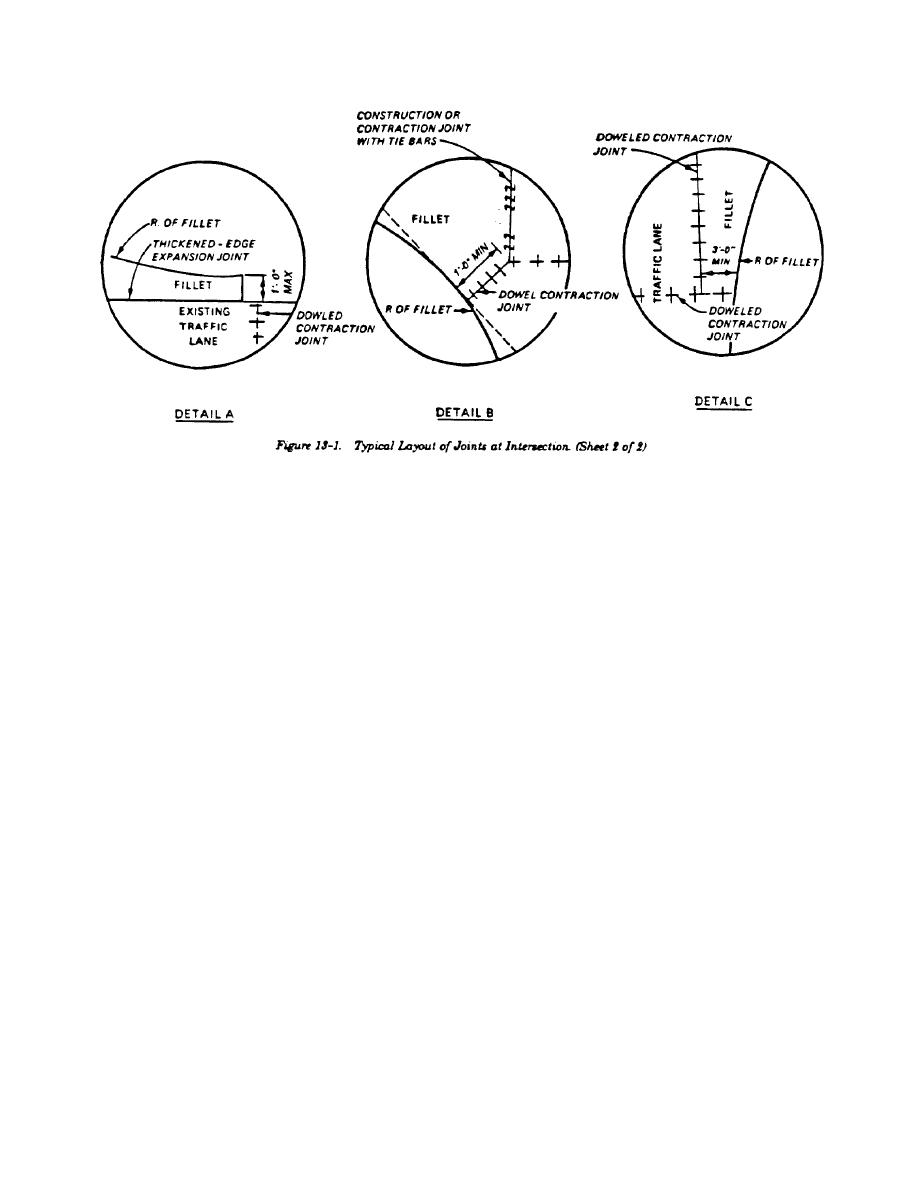
TM 5-822-5/AFM 88-7, Chap. 1
(2) Mismatched
joints.
A
partial
traffic testing. Although some cracking will occur in
reinforcement or slab is required where the joint
the pavement under the design traffic loadings, the
patterns of abutting pavements or adjacent paving
steel rein-forcing will hold the cracks tightly closed.
lanes do Dot match, unless the pavements are
The reinforcing will prevent spalling or faulting at
positively separated by an expansion joint or slip-
the cracks and provide a serviceable pavement
type joint having Dot less than -inch bond-
during the anticipated design life. Essentially, the
breaking medium. The pavement slab directly
design method consists of determining the
opposite the mismatched joint should be reinforced
percentage of steel required, the thickness of the
with a minimum of 0.05 percent of steel in
reinforced concrete pavement, and the minimum
directions normal to each other for a distance of 3
allowable length of the slabs. Figure 13-2 presents
feet back from the juncture and for the full width or
a graphic solution for the design of reinforced
length of the slab in 8 direction normal to the
concrete pavements. Since the thickness of a
mismatched joint. Mismatched joints normally will
reinforced concrete pavement is a function of the
occur at intersections of pavements or between
percentage of steel reinforcing, the designer may
pavement and fillet areas as shown in figure 13-1.
determine either the required percentage of steel for
d. Other uses. Reinforced concrete pavements
a predetermined thickness of pavement or the
may be considered for reasons other than those de-
required thickness of pavement for a predetermined
scribed above provided that a report containing a
percentage of steel. In either case, it is necessary
justification of the need for reinforcement is pre-
first to determine the required thickness of plain
pared and submitted for approval to HQUSACE
concrete pavement by the method outlined
(CEMP-ET) or the appropriate Air Force Major
previously in chapter 12. The plain concrete
Command.
pavement thickness hd (to the nearest 0.1 inch) is
used to enter the nomograph in figure 13-2. A
straight line is then drawn from the value of hd to
13-2. Design Procedure.
the value selected for either the reinforced concrete
a. Thickness design on unbound base or
pavement thickness hr or the percentage of
subbase. The design procedure for reinforced
reinforcing steel S. It should be noted that the S
concrete pavements uses the principle of allowing a
value indicated by figure 13-2 is the percentage to
reduction in the required thickness of plain concrete
be used in the longitudinal direction only. For
pavement due to the presence of the steel
normal designs, the percentage of steel used in the
reinforcing. The design procedure has been
transverse direction will be one- half of that to be
developed empirically from a limited Dumber of
used in the longitudinal direction. In fillets, the
prototype test pavements subjected to accelerated
percent steel will be the same in both directions.
13-3



 Previous Page
Previous Page
